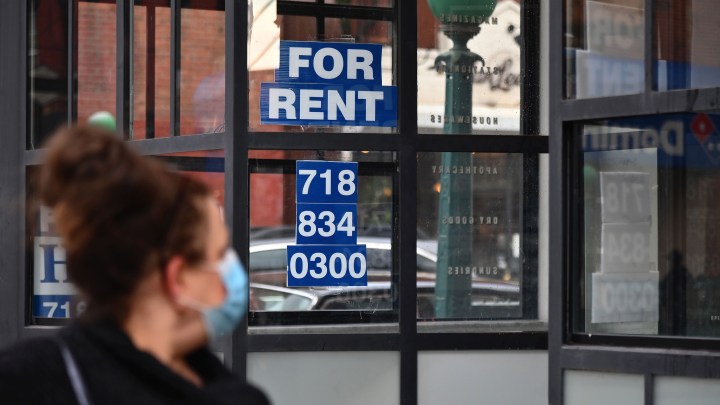
What’s the future of commercial real estate?

Talk about dodging a bullet. Adin Meir was just about to sign a lease on a new office space for his company back in March. “We decided not to pull the trigger on that,” he said.
Meir is president of CodeGreen Solutions, a consulting firm. Like a lot of corporate America, the firm’s workplace is mostly remote now, “though we do miss the office and the collaboration and innovation that happens there.”
So they are gonna get that new office space, but sometime in 2021. And it won’t be the office space they envisioned a year ago. “At least at first,” he said, “it’ll be smaller.”
About 25% smaller, he thinks. There are lots of companies talking about changing their commercial footprint. But that hasn’t shown up in vacancy rates across the board yet, according to Christian Beaudoin, managing director of research at JLL, one of the world’s largest commercial real estate services companies. In some markets such as midtown Manhattan, vacancy rates are the highest they’ve been since 2009. The long-term historical average of commercial office space vacancy is 15.3%, and the national vacancy rate is just 16% now. “So we aren’t in dire straits quite yet,” Beaudoin said.
That may be the case, in part, because commercial leases are often long — sometimes operative for decades — and turn over slowly, and many companies are trying to sublet unused office space in the interim. It could also be that employers aren’t quite ready to jettison the office entirely.
“We surveyed thousands of employees and users of commercial properties,” said Beaudoin. “Most are telling us they want to return, just not every single day.”
So they might not reduce the physical footprint of an office so much as the time spent there.
That would soften the blow to commercial landlords.
At the same time, it’s clear that some businesses simply won’t need the footprint they once had, said Brian Graham, partner at Klaros Group. “People are not gonna go to the suburban mall as often as they used to. People won’t go into bank branches and instead use online banking.”
Beyond the short-term crisis many landlords now face, there will be some long-term pressure. Jonathan Miller, president of appraisal and consulting firm Miller Samuel, said those landlords come in a lot of shapes and sizes. “They could be a publicly traded company all the way to a private individual or family,” he said.
And many of those landlords have debts to pay. On average, commercial real estate is financed mostly, 70% to 85%, by debt. The rest is in equity, according to Graham of Klaros Group. If losses pile up because, say, rent falls, properties go vacant, debts don’t get paid back. “It’s hard to imagine that every lender is gonna escape unscathed,” he said.
Half of those lenders, by the way, are banks. But this whole question of how big offices are gonna be is a long-term problem. Landlords, tenants and banks are still trying to deal with the short term right now. Like, will that restaurant on the corner survive, let alone pay rent?
There’s a lot happening in the world. Through it all, Marketplace is here for you.
You rely on Marketplace to break down the world’s events and tell you how it affects you in a fact-based, approachable way. We rely on your financial support to keep making that possible.
Your donation today powers the independent journalism that you rely on. For just $5/month, you can help sustain Marketplace so we can keep reporting on the things that matter to you.


















